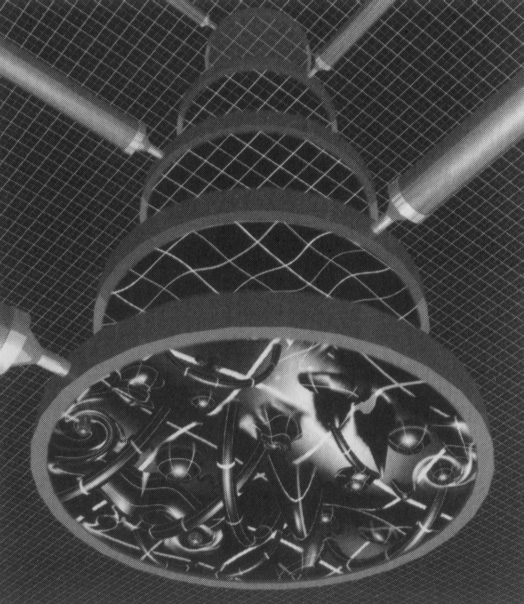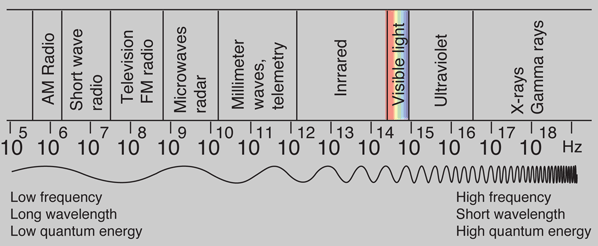
Einstein
"Einstein shows us that this is not how the world is: it is merely how the world appears to be at the low speeds we are used to in our everyday lives. . . . Einstein does away with the idea of relative speeds and replaces it with a deeper understanding that motion is not relative: it is invariant and it is the motion of light has. Space and time are joined together, Einstein says, into a single four-dimensional reality called space-time, and it is in that extra-dimensional reality that all motion is seen to be the same. Motion only looks different because we we don't experience that unity of time and space.
Christopher Potter, You Are Here. pp. 89-90.
“In June 1905, Einstein wrote a paper with the unassuming
title “On the Electrodynamics of moving bodies,” which once and for
all spelled the end of the luminiferous ether. In one stroke, it also changed
forever our understanding of space–time.”
Einstein struggles with the question of what a light wave would look like if you chased after it at exactly light speed,”
Michio Kaku, Einstein's Cosmos, p. 44.
300,000 meters a second
670 million miles in an hour
“light never is stationary; regardless of your state of motion,”
p. 45.
“Special and general relativity shattered the universality, the oneness of time.”
“..we each pack up a shard of Newton’s old universal time and carry it with is. It becomes our own personal clock, our own personal lead relentlessly pulling;ling us from one moment to the next.”
p. 128
“We are all within spacetime.”
p. 131
“We are shocked by the theories of relativity, by the universe that is,
because while our personal clock seems to tick away uniformly, in concert with
our intense sense of time, comparison with other clocks reveals differences.
Time for you may not be the same as time for me.”
p. 128.
String Theory competes with Loop Quantum Gravity for a mathematically provable theory of the material behavior of quarks and leptons.
“...string theory has revealed that the fabric of the cosmos may have many
more dimensions than we perceive directly --dimensions that may be the key to
resolving some of the universes deepest mysteries.
“...that familiar notions of space and time do not extend into the”
space time realm where it takes light 10-43 seconds to travel a Planck length
( see 491)
“...which suggests that space and time as we currently understand them
may be mere approximations to more fundamental concepts that still await our
discovery.”
p. 174.
“The verdict? Although the issue is still debated,...the most straightforward
reading of Einstein and his general relativity is that spacetime can provide
such a benchmark: spacetime is a something.”
AKA “a more broadly defined relationist outlook.”
p. 175.
Planck, Max: Planck was a physicist who published Einstein’s 1905 &
1915 papers.
Planck length is 10-33 centimeters --cm. Is one hundredth of a meter-- (or a
yard)
Planck time is 10-43 seconds -- sec. Is one three hundred and sixtieth of an
hour--
No fractions of Planck length are possible
p. 491.
 Measures
MeasuresSpeed
“Speed is measured by how far something goes by divided by how long it
takes to get there. It is a measure of space divided by a measure of time.”
s ÷ T.”
Planck length is 10-33 centimeters “the size of strings themselves”
p. 350.
centimeter--one hundredth of a meter (divide 3 feet into 100 segments)
in each of those segments
3 6 9 12 15
15 exponents
.00,000,000,000,000,000,000,000,000,000,000,1 zeros
a million, septillionths of a centimeter! [1000, trillion, trillionths of a
centimeter]
Planck length is the size below which conventional notion of space (spacetime) breaks down.

Planck time is 10-43 seconds, or the time (T) it takes for light to traverse one Planck
Length; time interval below which conventional notion of time breaks down.
Planck mass is 10-5 grams, the mass of a grain of dust a billion billion times
the proton mass; typical mass of a vibrating string.
Photon, a bundle of light, “messenger particle of the electromagnetic force.
Kaluza, Theodor -- a little-known German Mathematician
“in a few brief pages...laid out an approach for unifying the two forces known at the time as gravity and electromagnetism.”
To achieve this goal, Kaluza proposed a radical departure from something so basic, so completely taken for granted, that it seemed beyond questioning. He proposed the the universe does not have three space dimensions. Instead, Kaluza asked Einstein and the rest o the physics community to entertain the possibility that the universe has four space dimensions so that, together with time, it has a total of five spacetime dimensions..”
p. 360.
Kaluza proposed that in addition to left/right, back/forth and up/down, the universe actually has one more spatial dimension that, for some reason, no one has ever seen.
If correct, this would mean that there is another independent direction in which
things can move, and therefore that we need to give four pieces of information
to specify a precise location in space and a total of five pieces of information
if we also specify a time.”
Einstein received A letter from Theodor Kaluza, in April 1919.
Ibid.
“So why contemplate such a bizarre idea?”
p. 361.
Kaluza had found a framework that combined Einstein’s original equations of general relativity with those of Maxwells equations of electromagnetism.
• Kaluza’s paper suggested that the geometrical reach of space and time was
greater still . . . . ,
• Kaluza realized that in a universe with an additional space dimension there would be additional warps and ripples. And those warps and ripples, his analysis showed, would be just right to describe electromagnetic fields.
• In Kaluza’s hands, Einstein’s own geometrical approach to the universe proved powerful enough to unite gravity and electromagnetism.”
p. 361.
“...-but the idea of an invisible space dimension, no matter how compelling in theory, still sounded outrageous.”
Ibid.
The tightrope illustrates that dimensions --the independent directions in which
anything can move-- come into qualitatively distinct varieties. They can be
big and easy to see..., Or they can be tiny and more difficult to see,...”
At closer examination, from a relatively nearer distance, the tightrope which
appeared one dimensional at a mile away, appears to have a clockwise/counterclockwise
dimension from a yard or a foot away.
Klein’s contribution (Oskar Klein, the Swede, not Felix Klein the mathematician & bottle designer)
“Klein's contribution was to suggest that what’s true for an object
in the universe might be true for the fabric of the universe itself.
“..maybe the fabric of space also has a small, curled-up, circular dimension, one so small that no one has powerful enough magnifying equipment to reveal its existence. Because of its tiny size Klein argued, the dimension must be hidden.”
p. 363.
How small is small? Well, by incorporating certain features of quantum mechanics into Klein’s original proposal, Klein’s mathematical analysis revealed that the radius of an extra circular spatial dimension would likely be roughly the Planck length, certainly way too small for experimental accessibility.”
p. 363.
“Instead the extra dimension is a new direction, completely distinct from
the three we know about, which exists at every point in our ordinary three-dimensional
space, but is so small that it escapes detection even with our most sophisticated
instruments.”
p. 365.
Was regarded by Einstein after 1940 and the inability to explain the electron’s
behavior in terms of higher dimensions, as an obstacle to further unification
of general relativity and gravity -- the grand unified theory -- (the grail
for which Einstein searched in vain.)
“Within a few decades, though, the Kaluza-Klein theory would make a spectacular
comeback.”
p. 366.
“Kaluza and Klein had proffered a challenge by suggesting that there were
four space dimensions, but this amounted to yet another assumption--a different
assumption, but an assumption nonetheless.”
p. 367.
“A calculation ... Determines the number of space dimensions according to string theory, and the surprising thing is that the calculated number is not three, but nine.”
Ibid.
“When time is also taken into account, this is a ten-spacetime-dimensional
universe, as required by the equations of string theory. If the extra dimensions
are curled up small enough, they would easily have escaped detection.”
p. 368.
Six dimensional shapes, curled up continuously (seamlessly) within the three dimensions we encounter are called Calabi-Yau shapes or Calabi-Yau spaces.

“Literally as you walk from one place to another, your body would move
through all nine dimensions rapidly and repeatedly....because the ultramicroscopic
fabric of the cosmos is embroidered with the richest of textures.”
p. 369
hint: strings are capable of vibrating in nine spacetime dimensions
![]()
Related pages to visit:
Black Holes
Capra's order
Cloud's Cosmos
Einstein's Cosmos
Gell Mann's way
Hawking's Universe
Kaku's search
Lovelock's view
Quantum Reality
Planck Length
“On the Electrodynamics of moving bodies,” Michio Kaku, Einstein's Cosmos,

Michio Kaku, Einstein's Cosmos. New York: W. W. Norton, 2004.
Christopher Potter. You Are Here: A Portable History of the Universe. New York: Harper Collins, 2009.
Stephen Hawking, The Universe in a Nutshell. New York: Random House (Bantam), 2001.